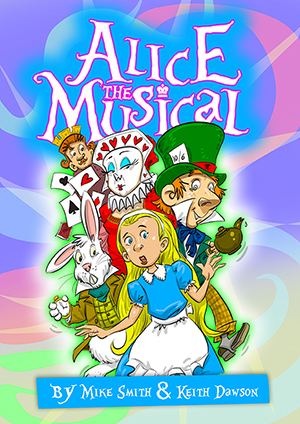First performance 23 December 1886 | Book H. Savile Clark | |
 | ||
Productions 1886 West EndWest End revivals in 1888, 1898,1900, 1908, 1910, 1914, 1915, 1916, 1921, and 1927 Lyricists H. Saville Clark, Lewis Carroll Similar Wonderland, Wonderland, Peter and Alice, Gentleman Joe, Bluebell in Fairyland | ||
Musical theater academy presentation of alice in wonderland
Alice in Wonderland is a musical pantomime by Henry Savile Clark (1841–1893; book and lyrics), Walter Slaughter (music) and Aubrey Hopwood (lyrics), based on his books Alice's Adventures in Wonderland and Through the Looking-Glass. The piece, billed as "A musical dream play in two acts", achieved considerable popularity. At Carroll's request, Slaughter retained the old tunes in the parodies such as "Bonny Dundee".
Contents
- Musical theater academy presentation of alice in wonderland
- Alice in wonderland jr full show
- Synopsis
- Subsequent productions
- References
The pantomime opened on 23 December 1886 at the Prince of Wales Theatre in London. Phoebe Carlo played Alice. The Theatre wrote in its review, "Alice in Wonderland will not appeal to the children alone. ... Mr. Savile Clark has done wonders. ... The play is beautifully mounted, and splendidly acted, Miss Phœbe Carlo being very successful as the little heroine... she played in a delightful and thoroughly artistic fashion, and in this respect she was closely followed by a tiny mite, Miss Dorothy D'Alcort, who plays first the Dormouse. ... Mr. Edgar Bruce, Mr. Walter Slaughter (who has written some charming music for the piece), and Mr. Savile Clark, all deserve unstinted praise." The piece was frequently revived over the next four decades.
Alice in wonderland jr full show
Synopsis
Act I, "Alice's Adventures in Wonderland", is in two scenes: "A Forest in Autumn" and "A Glade in Wonderland". Act II, "Through the Looking Glass", consists of four scenes: "Through the Looking Glass"; "The Garden of Live Flowers"; "A Sea-Shore"; and "The Banqueting Hall – The Forest Again." A review in The Theatre summarised the story as follows:
The story runs glibly, opening with a chorus of fairies surrounding Alice asleep in a chair beneath a tree, from there we progress splendidly, making a new acquaintance with all our old friends, the White Rabbit, the Caterpillar, the duchess with her Baby, the Cook with her reckless use of pepper, the Cheshire Cat with his remarkable smile, the Hatter, the Hare, and the Dormouse, who have their perpetual tea party, and treat Alice to conundrums and unconventional rudeness. Then comes a long and brilliant procession, which should fill Alice's heart with awe, if not with admiration, but our heroine is nothing daunted by this large crowd. "Why, they're only a pack of cards," she says, "I needn't be afraid of them?" and so she answers the sanguinary-minded queen of Hearts, in a reckless manner, and refuses to see heads knocked off in such profusion. She then dances with the Cards in a graceful gavotte, and afterwards protects her old friend, the Cheshire Cat, from an undeserved execution. The Gryphon and Mock Turtle then appear, and Alice receives some hints as to a sea education, and the first act of the dream play for children ends with the trial of the Knave of Hearts for eating the tarts, in which Alice's verdict of acquittal is unanimously passed.In the second act, Mr. Savile Clarke takes us to another book, Through the Looking-Glass, and Alice is introduced to the chessmen and Chorus, who dance stiffly for her delectation, then the Red Queen gives her some advice after she has spoken to the live flowers, and Tweedledum and Tweedledee appear. She soon makes friends with these massive twins, and pleads hard when they determine to have a mortal combat, but all to no purpose, and so after she has witnessed the greedy Carpenter and Walrus devour their daily portion of oysters, she assists in arming Tweedledum and Tweedledee for the fray. The arrival of a Crow sends the warriors to speedy flight, and Humpty Dumpty appears on his wall, and so the play goes on until we see Alice once more asleep in her chair, and hear her wake to say, "Oh! I've had such a curious dream!"Subsequent productions
The musical was frequently revived during West End Christmas seasons during the four decades after its premiere. London productions were mounted at the Globe Theatre in 1888, with Isa Bowman as Alice; the Opera Comique in 1898; the Vaudeville Theatre in 1900, with some new additional music by Slaughter; the Camberwell Theatre in 1902; the Savoy Theatre in 1908 produced by William Greet; the Savoy in 1910; the Wimbledon Theatre in 1914; the Savoy in 1914; the Duke of York's Theatre in 1915; the Savoy in 1916; the Garrick Theatre in 1921; and the Savoy in 1927.
Adult actors who appeared along with the mainly juvenile casts included Irene Vanbrugh as the Knave of Hearts (1888); Ellaline Terriss as Alice and Seymour Hicks as the Hatter (1900); Marie Studholme as Alice (1906); Dan Leno (1909, in a production conducted by Marjory Slaughter, the composer's daughter); and C. Hayden Coffin as the Hatter (1913 and 1921).
